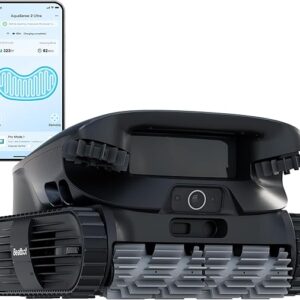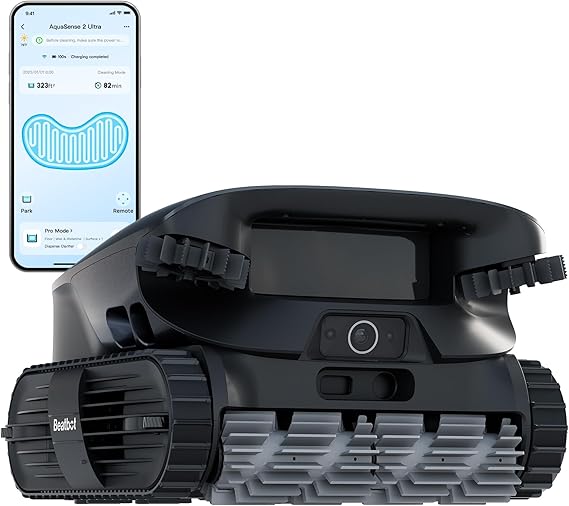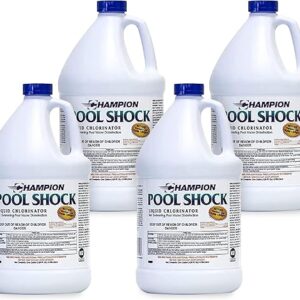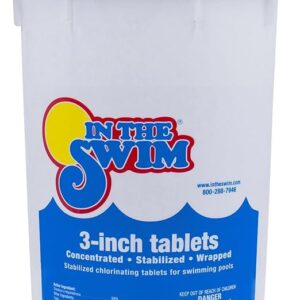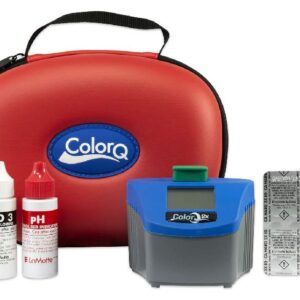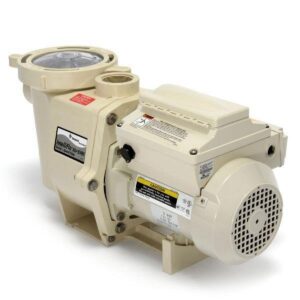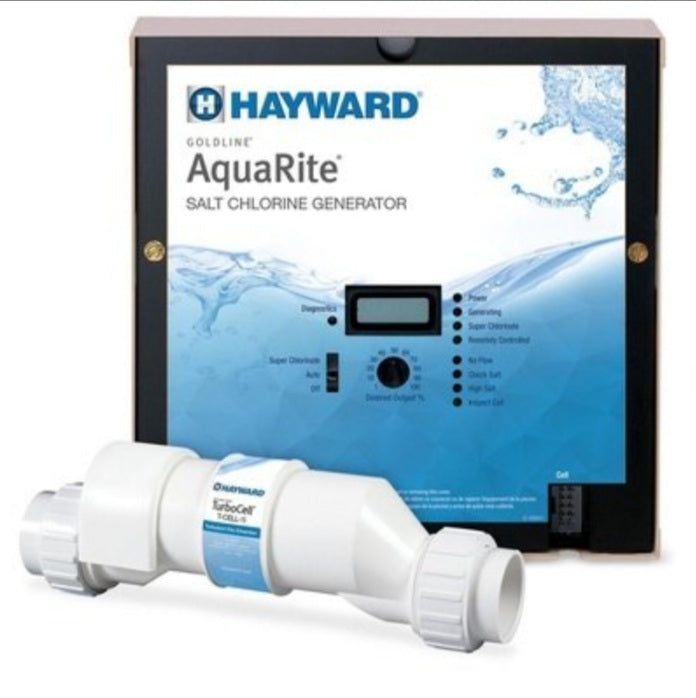Saltwater Pool Maintenance 101: Solutions for A Trouble-Free Saltwater Pool
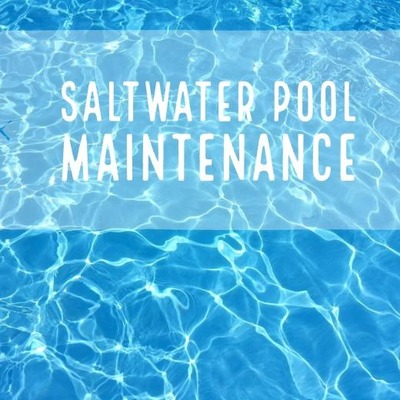
Introduction
Saltwater pool maintenance is more manageable. Moreover, saltwater pools have gained popularity in recent years due to their perceived benefits, including gentler water on the skin and eyes, reduced use of traditional pool chemicals, and a natural, refreshing swimming experience.
However, like any pool, saltwater pools require proper maintenance to ensure they remain clean, safe, and enjoyable.
This comprehensive guide will delve into the ins and outs of saltwater pool maintenance, including common issues like pH level fluctuations, chlorine imbalances, and calcium scales.
Additionally, we will discuss the equipment and chemicals used in saltwater pools and weigh the pros and cons of opting for this type of pool.
Saltwater Pool Basics
Saltwater pools are not entirely chlorine-free; they use a saltwater chlorine generator (SWG) to produce chlorine through electrolysis. In this system, a salt cell within the generator converts salt into chlorine, which sanitizes the pool water. The benefits of this system include a more consistent and milder chlorine presence, reducing the need for harsh chemicals.
Common Saltwater Pool Problems and Solutions
1. Rising pH Levels:
- Problem: One common issue in saltwater pools is the constant increase in pH levels, leading to cloudy water and reduced chlorine effectiveness.
- Causes: The most common cause of rising pH in saltwater pools is the overproduction of chlorine in the salt cells, which produces a byproduct called sodium hydroxide that comes with high pH levels. Another cause is adding excess pH raisers.
- Solution: Regulate your chlorine generator to low percentage settings to produce the right amount of chlorine and not in excess. Also, ensure your salt level is within the recommended range of 2700-3400 ppm. Regularly test the pH levels using a reliable test kit. Add muriatic acid in small increments to lower the pH. This should be done with the pool pump running to ensure proper distribution. Add soda ash or baking soda as needed to raise the pH. Aim to maintain a pH level between 7.4 and 7.6 all the time.
Related Article: How to Solve Rising pH Levels in Saltwater Pools
2. Low or High Free Chlorine Levels:
- Problem: Chlorine levels can fluctuate due to various factors, leading to ineffective sanitation or over-chlorination.
- Causes: The leading causes of chlorine fluctuations are wrong percentage settings in the chlorine generator and imbalanced salt levels.
- Solutions: Monitor chlorine levels using an accurate test kit. Add pool-grade salt to the water to raise chlorine levels if the SWG is not producing enough chlorine. To lower chlorine levels, allow the pool’s natural chlorine production to catch up or use a chlorine neutralizer if levels are dangerously high. Adjust the SWG settings to maintain the desired chlorine level, usually 3 ppm. The higher the percentage settings, the more chlorine is produced, and vice versa.
Related Article: How to Fix Free Chlorine Problem in Saltwater Pools
3. Calcium Scales:
- Problem: Calcium scales can accumulate on pool surfaces, leading to cloudy water and damage to pool equipment.
- Causes: The leading causes of calcium scales or white flakes in a saltwater swimming pool are high temperature and pH levels in the chlorine generator. Also, using calcium in chlorine production contributes to calcium scaling if the calcium level is excess in the water.
- Solutions: Regularly monitor calcium hardness levels. The ideal range is typically 200-400 ppm. To prevent scaling, maintain proper water balance, especially calcium hardness and pH levels. Use a pool scale preventer to prevent the formation of calcium scales. If scales have already formed, consider a pool descaler treatment.
Related Article: How to Clear and Prevent Calcium Scales in A saltwater Pool
Recommended water balance for SWGs
- pH Level:
- Recommended Range: 7.2 to 7.8
- Ideal pH: 7.4 to 7.6
- It ensures the effective operation of the SWG.
- It prevents scale formation on pool surfaces.
- It provides comfortable swimming conditions and reduces eye and skin irritation.
- Free Chlorine Level:
- Recommended Range: 4 to 6 ppm (parts per million), and Ideal level is 3 parts per million.
- Total Alkalinity (TA):
- Recommended Range: 60 to 80 ppm
- Calcium Hardness:
- Recommended Range: 200 to 400 ppm and 350 ppm for plaster and fiberglass pools.
- Cyanuric Acid (Stabilizer or Conditioner):
- Recommended Range: 70 to 80 ppm
- Salt Level (Sodium Chloride):
- Recommended Range: 2700 to 3400 ppm
- Temperature:
- Recommended Range: Typically comfortable for swimming (usually between 78°F and 84°F or 25°C and 29°C)
Regularly testing and adjusting these water balance parameters will help ensure that your saltwater pool operates efficiently and that the SWG can produce chlorine effectively. It also promotes a safe, comfortable swimming environment, preventing common issues like scale buildup, corrosion, and pH fluctuations. Always refer to your SWG manufacturer’s guidelines for specific water balance recommendations tailored to your equipment.
Buy Recommended Swimming Pool Chemicals
SWG Maintenace Schedule and Best Practices
Maintaining a saltwater chlorine generator (SWG) is crucial for the proper functioning of your saltwater pool and the longevity of the generator itself. Here’s a recommended SWG maintenance schedule to help you keep your system in top shape:
Daily:
- Check Chlorine Output: Observe the SWG’s chlorine production and ensure it operates within the desired range of 3 ppm. Adjust the SWG settings if needed to maintain the proper chlorine level.
Weekly:
- Inspect the Salt Cell: Perform a visual inspection of the salt cell for any signs of scale buildup or debris. This buildup can hinder the SWG’s performance. Clean the cell if necessary. This can help prevent calcium scaling and maintain efficient chlorine production. To clean the salt cell, turn off the SWG and remove the cell according to the manufacturer’s instructions. Check the monthly maintenance schedule below to see how to clean your salt cell.
- Test Water Chemistry: Use a pool water test kit to check pH, chlorine levels, alkalinity, and calcium hardness. Make any necessary adjustments to maintain the recommended water balance.
Monthly:
- Clean the Salt Cell: Every month or as needed, remove the salt cell from the SWG according to the manufacturer’s instructions. Clean it with a high-pressure hose or a plastic brush to remove any scale or debris. If there is a stubborn scale, thoroughly clean it with diluted muriatic acid (following manufacturer guidelines). Rinse the cell thoroughly before reinstalling.
Every 3-6 Months:
- Check for Leaks and Corrosion: Inspect the SWG and its connections for any signs of leaks, corrosion, or loose electrical connections. Address any issues promptly to prevent further damage.
Annually:
- Replace Salt Cell: Depending on the manufacturer’s recommendations, consider replacing the salt cell annually or as the manufacturer suggests. Over time, cell plates can degrade, affecting the SWG’s performance.
- Winterize the SWG: If you live in an area with freezing temperatures, follow the manufacturer’s guidelines for winterizing the SWG. This may involve draining the cell, disconnecting it, and storing it in a frost-free location.
Ongoing:
- Monitor Salt Levels: Regularly test the salt level in your pool and add salt as needed to maintain the recommended salt concentration (typically between 2700 and 3400 ppm). Be cautious not to over-salt the pool because the only way to reduce salt levels is by partially draining and re-filling your pool water.
- Keep a Backup Chlorine Source: It’s wise to have a backup source of chlorine (liquid chlorine is highly recommended) on hand in case the SWG encounters issues or during periods of high demand, like heavy pool usage.
- Maintain Filtration System: Keep your pool’s filtration system clean and well-maintained. Regularly clean or backwash the filter, clean the skimmer and pump baskets, and ensure proper water circulation.
- Adjust SWG Settings: Periodically check the SWG’s chlorine output and adjust its settings to maintain the desired chlorine level in the pool water. Follow the manufacturer’s recommendations for operating parameters, including run times and chlorine output levels.
Remember that the specific maintenance requirements of your SWG may vary depending on the manufacturer and model, so always consult the manufacturer’s guidelines and instructions for your particular system. Regular maintenance will help ensure your saltwater pool stays crystal clear and inviting while extending the life of your SWG.
Buy Necessary Swimming Pool Equipment
Pros and Cons of Saltwater Pools
Pros:
- Gentler on Skin and Eyes: Saltwater pools provide a more comfortable swimming experience with reduced irritation to the skin and eyes.
- Low Maintenance: They typically require less maintenance and fewer chemicals than traditional chlorine pools.
- Consistent Chlorine Levels: SWGs ensure a steady supply of chlorine, reducing the need for manual chlorination.
- Environmentally Friendly: They use less chlorine, which can be more eco-friendly in the long run.
Cons:
- Initial Cost: Installation of an SWG can be expensive compared to traditional chlorine systems.
- Repairs and Maintenance: SWGs may require periodic maintenance and repair, adding to the long-term costs.
- Corrosion Risk: Salt can be corrosive to specific pool equipment, necessitating corrosion-resistant materials.
- Calcium Scaling: Calcium scale buildup can be an issue if water chemistry is not managed correctly.
Conclusion
Maintaining a saltwater pool requires attention to water chemistry, regular testing, and the use of appropriate chemicals. While they offer several benefits, including a more pleasant swimming experience and reduced chemical use, saltwater pools also have some challenges. Following the maintenance tips and solutions outlined in this article, you can enjoy the benefits of a crystal-clear saltwater pool while keeping common problems at bay.

